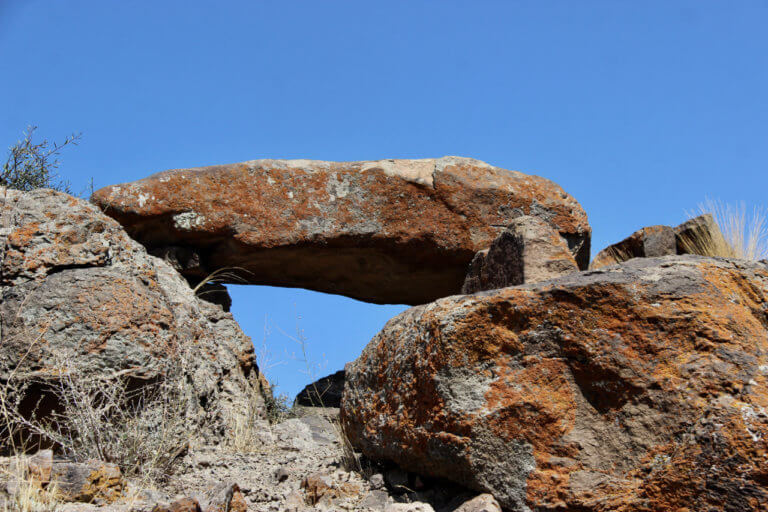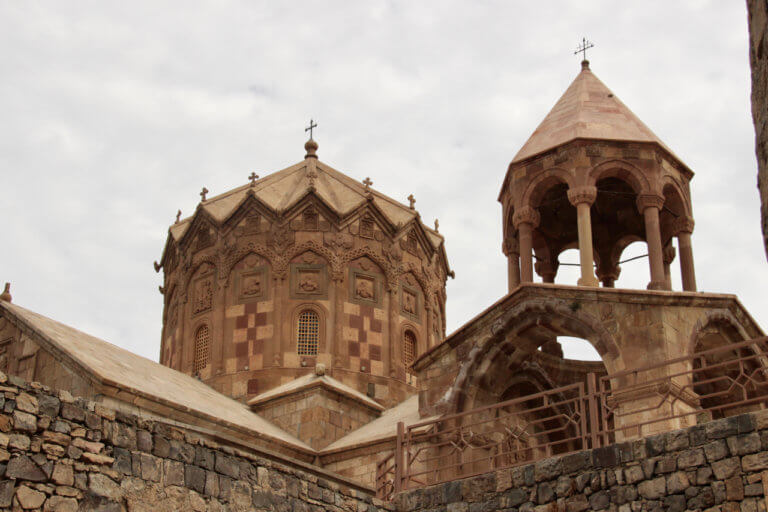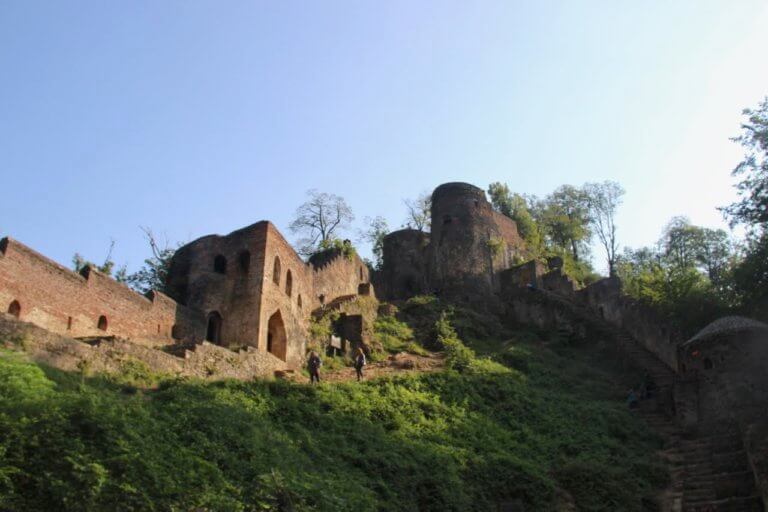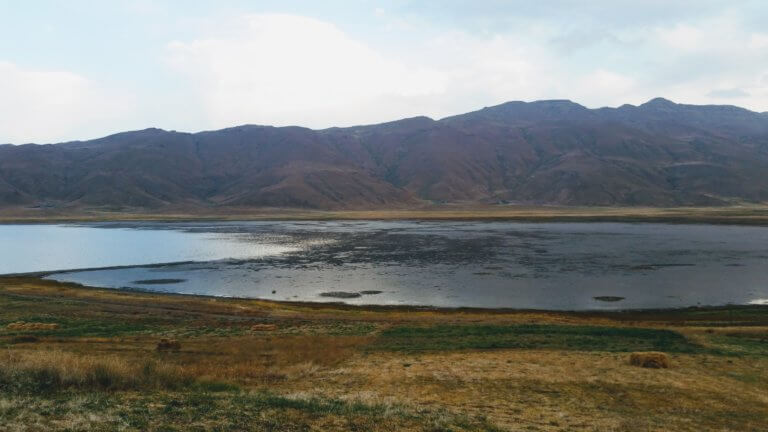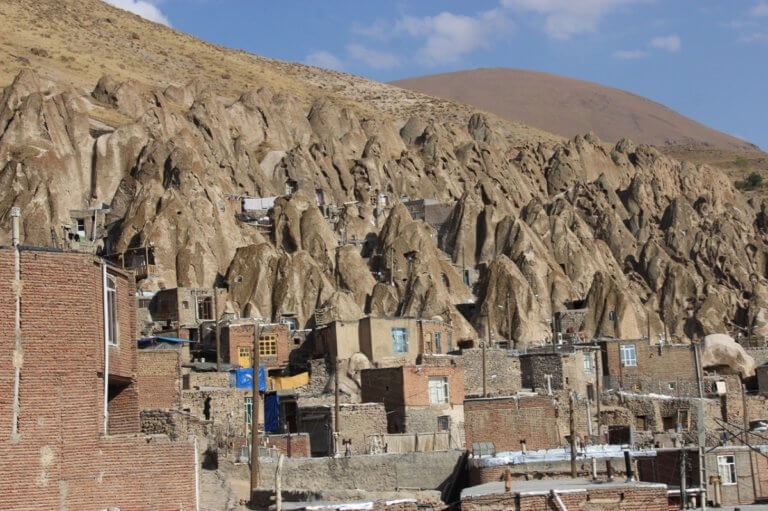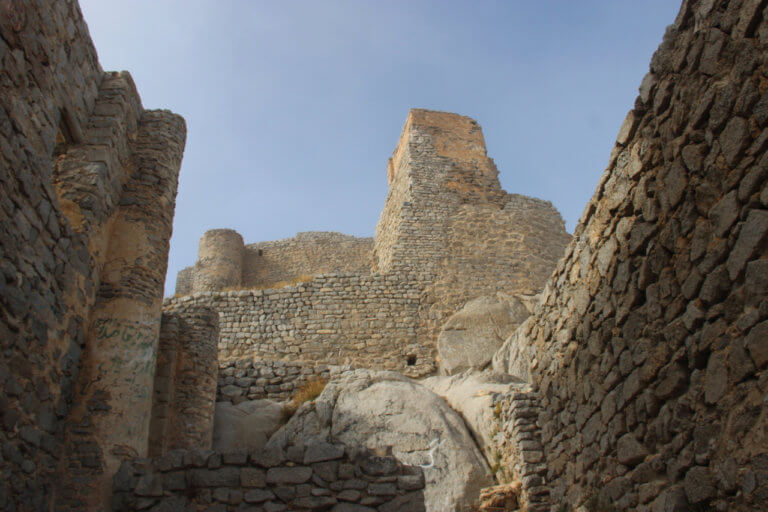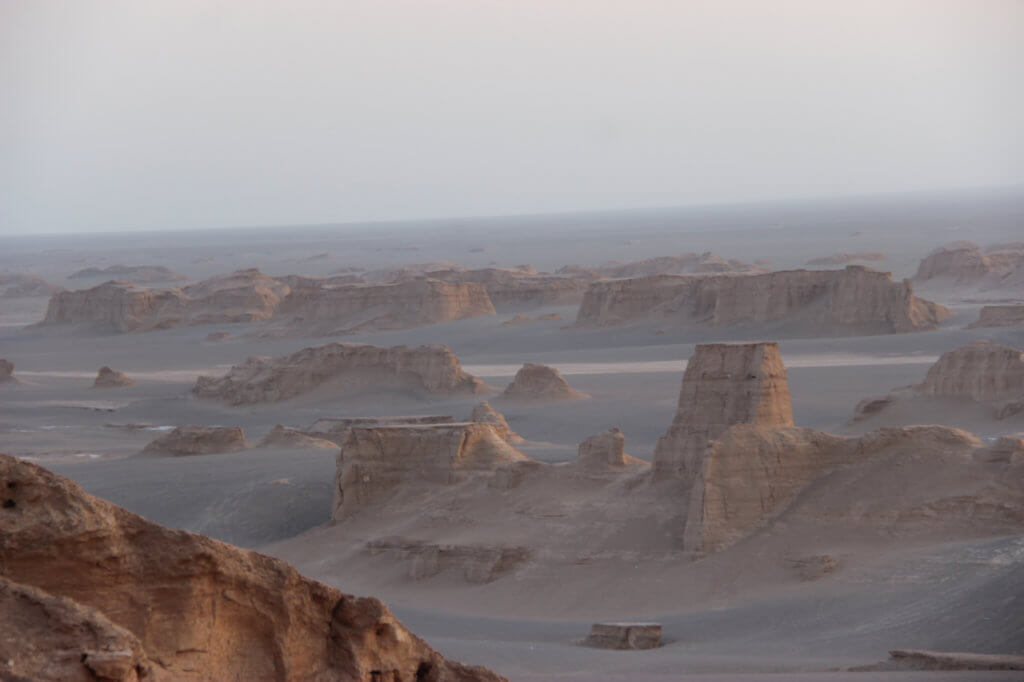
Day 243 4 October 2017
Venturing out alone we began at the Kerman Bazaar, the longest Bazaar in Iran – stretching over a kilometre. A mass of activity and towers of “stuff” as local traders displayed a wide array of goods. And of course, the motorcycle riders making their way through the laneways.
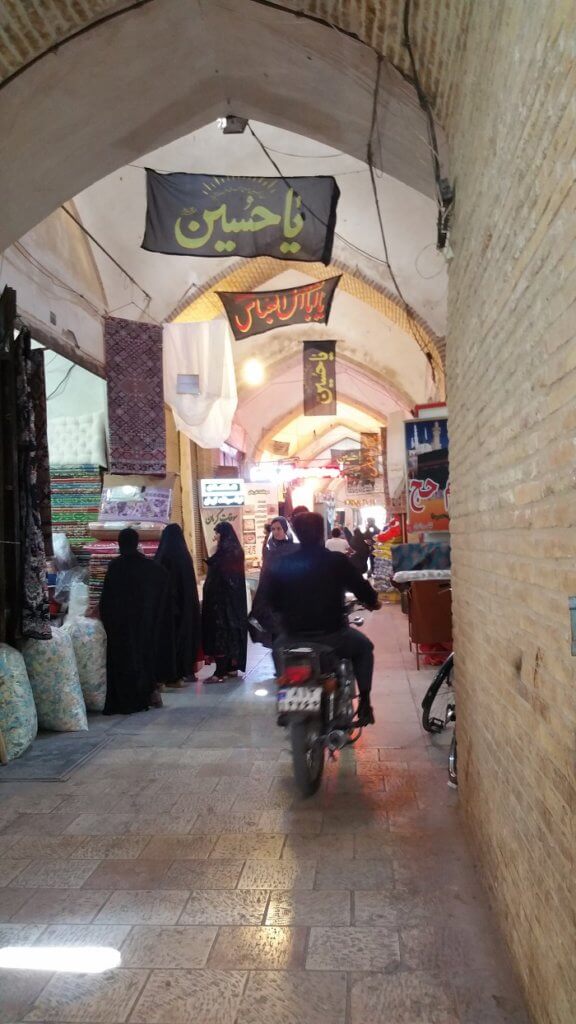
As we tried to photograph the central dome we met a charming Austrian couple who came from Vienna and knew where Chris had lived. Brave we thought – they were driving themselves through Iran!
The tiled dome ceiling at the centre of the bazaar was earthy muted colours with deep blue and white portraits around the edge of the cupola. The dome itself was simple and unadorned with the soft beige colour of the bricks forming the pattern. Easy to miss in the hub-bub of the bazaar but beautiful to stop and take in.
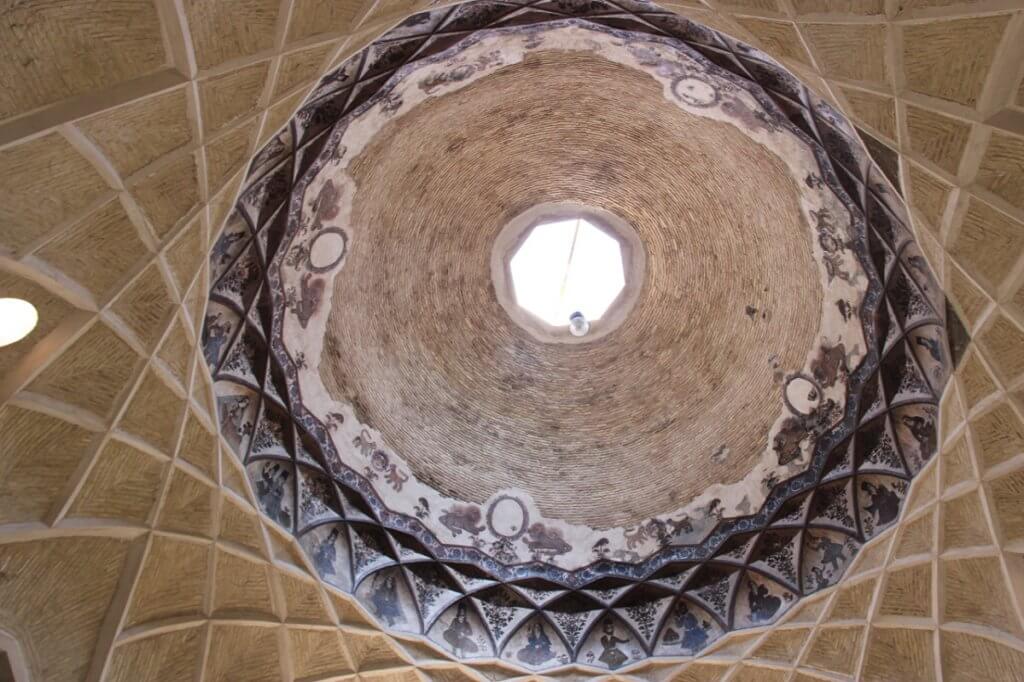
In one section of the Bazaar was the restored Ganjali Khan bathhouse, (Hammam) now a museum. Separate baths for men and women – the men’s being the largest and most decorated. The male bathhouse was the kind of space that made you wish it still operated. Vaulted walls to domed ceilings with blue tile work throughout. Marble columns surrounding the pools and frescoes around the lower walls. The women’s bathhouse with very simple decoration housed a display of traditional costumes from different areas of Iran. Bathhouses were once common across Iran but few are still in operation.
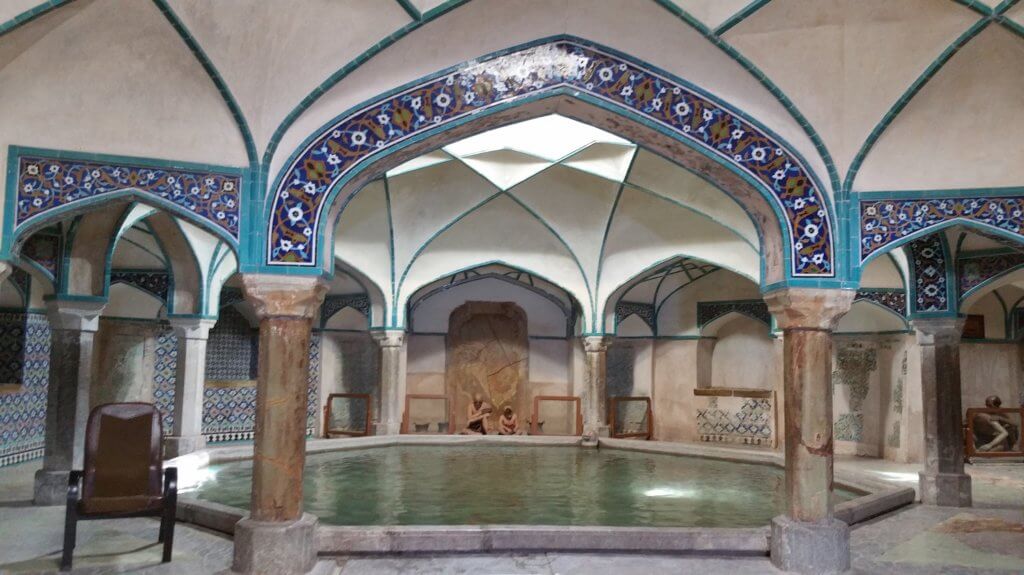
Whilst we were there we were asked to be interviewed to promote Kerman and the local region. We were interviewed by a charming local guide – Hossein. Later as we stopped for lunch we met Hossein again in the teahouse where he bought us a tea and told us we had chosen the best restaurant to eat at. A man of many talents he also runs camel tours in the desert, and is featured in the Lonely Planet.
We were bought our simple, tasty, and delicious meals for lunch – a Dizi for Mel and Ghormeh-sabze for me, beautifully presented with bread and fresh greens.
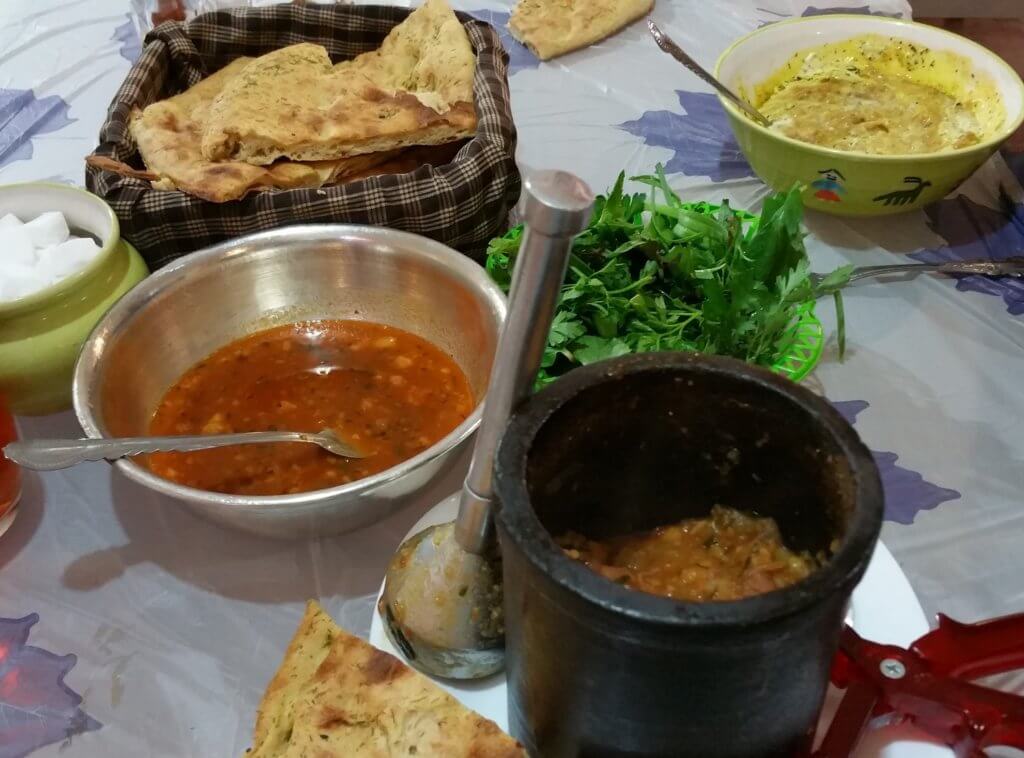
Later that afternoon our taxi driver Majid drove us out to the Dasht-e-Lut (Lut desert) to see the UNESCO listed landforms and catch the sunset
As we approached the desert we made a stop at the original Caravanserai for the area. A large mudbrick building with the rooms around the outside – long cool corridors with curved ceilings and natural light. On the turrets and exterior walls, intricate patterns were made using the small mudbricks.
On reaching the desert stop we discovered more tourists, than we had seen to date. Being a desert there was room for everybody – with entertainment provided watching various selfies being constructed.
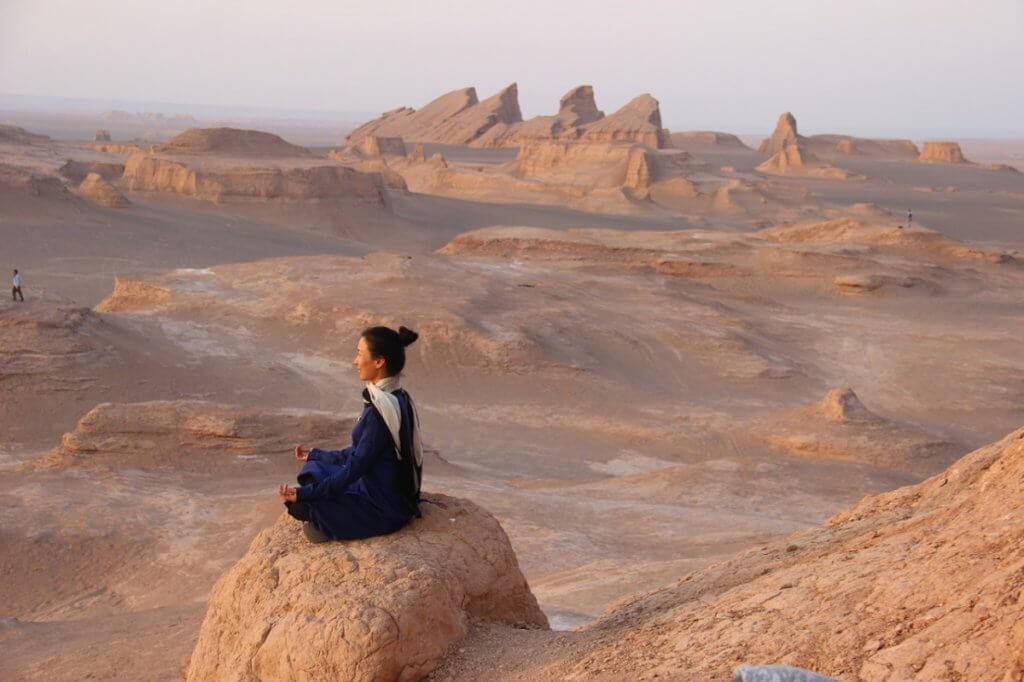
Surrounding a large monolith the sunset faded on one side from misty blue to pink and red to deeper blue across the rock formations. Across the desert landscape, the moon rose behind us as the colour faded from the sand.
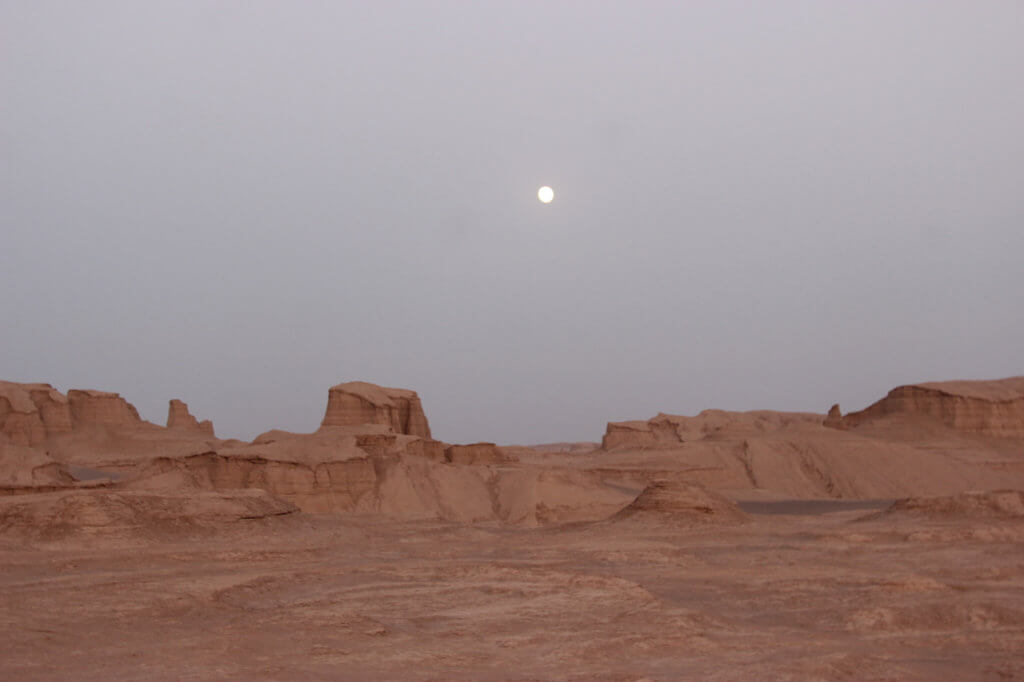
It was a reminder we were on the popular trail for tourists as we walked around the large monolith and saw against the red sandy desert a line of yellow cabs!
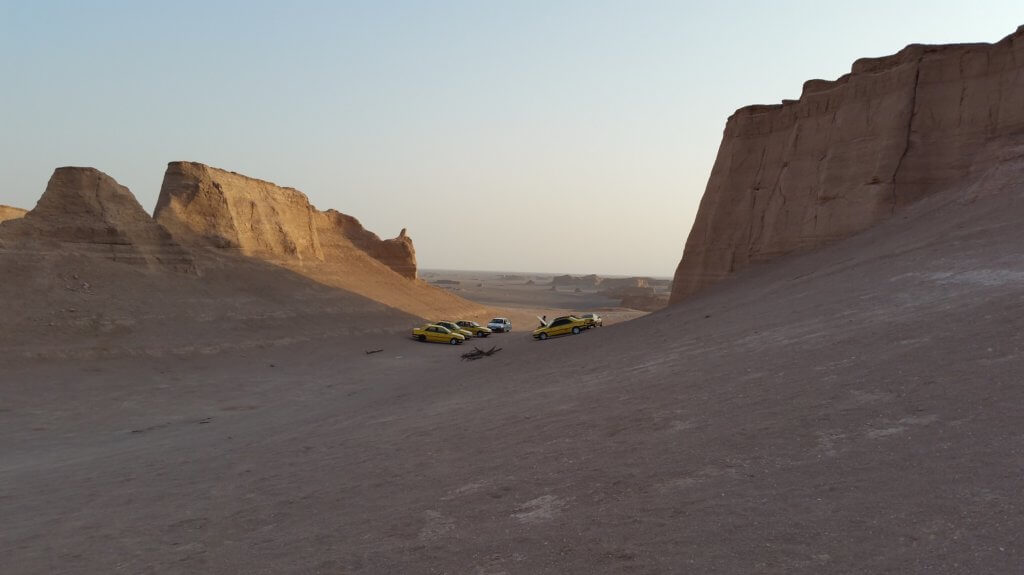
We had been told we were going to be at a desert camp and were excited at the experience but dreading another night of thin mattresses and aching hips It was then a pleasant surprised to find that the restored caravanserai we were to stay at was comfortably appointed.
Our hosts were attentive and provided a delicious meal of chicken, rice and fresh salads served on a homemade table and chairs in the small courtyard. We had a pleasant after-dinner conversation with fellow guests – a young man from Paris and his travelling companion, a young woman from Taiwan.
Nice thick doonas on the floor, a spotless bathroom with a real toilet and a great sleep.
